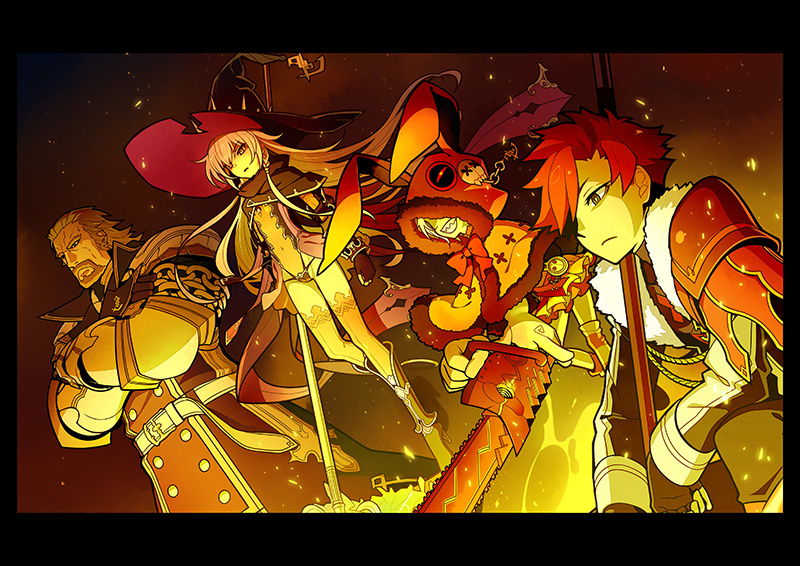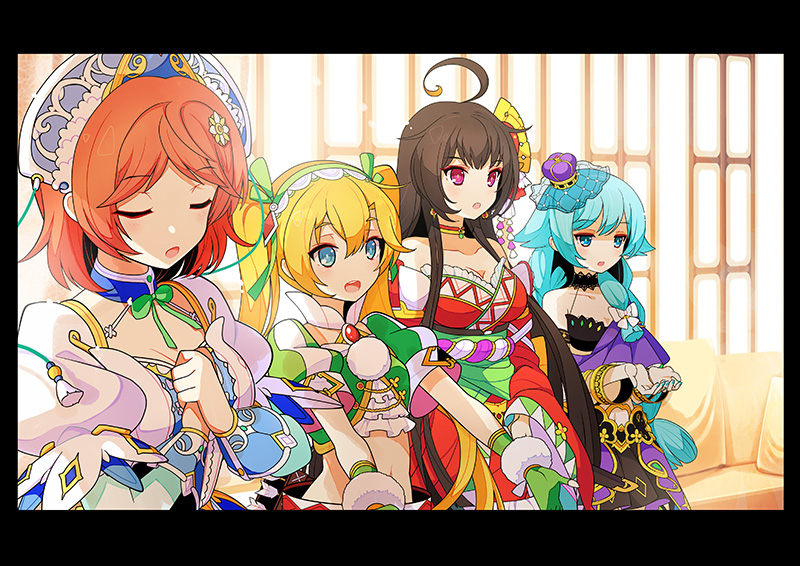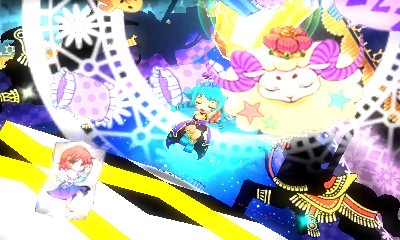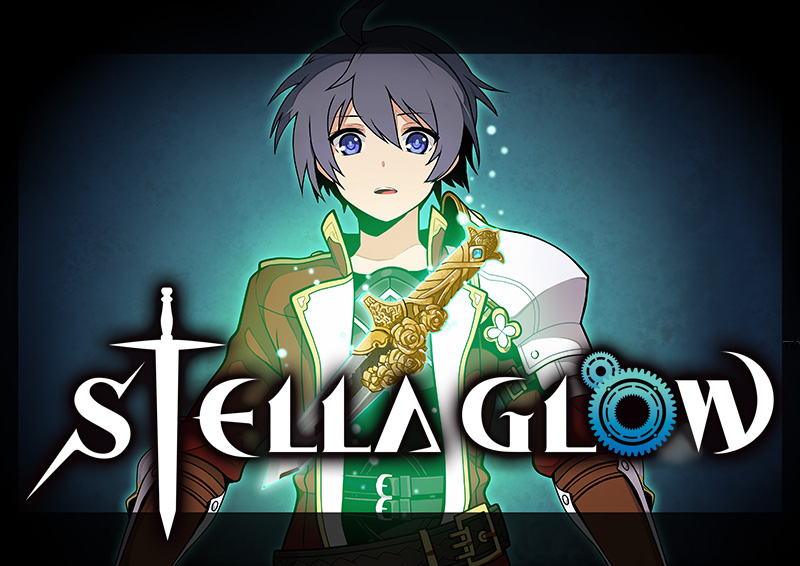Review: Stella Glow – Imageepoch’s Last Gasp
Community
Stella Glow
Imageepoch/Atlus
Reviewed on: 3DS (Exclusive)
Street: 11.17
It’s not always easy to get the SRPG genre right, and you can’t really fault Imageepoch for trying all these years. Their Luminous Arc series, while attracting somewhat of a cult following, never really got off the ground in terms of popularity. It’s not that the games were bad—after all, many of the series’ installments borrowed liberally from the mechanics of Final Fantasy Tactics Advance—but when you’re taking cues from one of the best mobile SRPGs ever made, you’re putting yourself in some really tough company. The Luminous Arc series was decent in its own right, but with so many other brilliant offerings in the SRPG genre, it’s hard to hear the praise for a solid, but mediocre game over the high hails well due to the Disgaea and Final Fantasy Tactics series. Unfortunately, the excitement around Luminous Arc and other Imageepoch games waned, and the company declared bankruptcy earlier this year. However, before they closed up shop for good, they managed to finish one last game—Stella Glow.
You might think that this is the part of the story where Imageepoch is vindicated by their final creative effort. By all rights, Stella Glow should turn out to be some kind of under-appreciated gem, a jewel of an SRPG that finally kicks off the shackles of its predecessors. Let’s see how this epilogue of a game stands up in a world without Imageepoch.
The Song of Stella Glow
 The story begins predictably. The main character Alto and his friend Lisette live in an elysian little hamlet at the edge of a forest. However, after a run-in with a mysterious singing woman late at night, Alto and Lisette’s world begins to change. Their town is assaulted by the Witch of Destruction, and they are forced to watch as their loved ones are encased in crystal, essentially killing them.
The story begins predictably. The main character Alto and his friend Lisette live in an elysian little hamlet at the edge of a forest. However, after a run-in with a mysterious singing woman late at night, Alto and Lisette’s world begins to change. Their town is assaulted by the Witch of Destruction, and they are forced to watch as their loved ones are encased in crystal, essentially killing them.
The psychological stress of watching her mother “die” becomes too much for Lisette, and awakens her latent magical powers, turning her into the Witch of Water. However, in order to reach her potential and get past a series of traumatizing events, she requires the help of Alto, who goes through an intense psychedelic dream world to assist his friend. Implored by a mysterious voice to “tune” the girl, it becomes clear from the start that Alto’s abilities are beyond what he, or anyone else, can truly comprehend.
What follows is familiar to anyone who’s ever played a heroic fantasy game. Alto joins the Regnant Knights to track down the Witch of Destruction and defeat her, but has to gather up a group of elementally themed witches to do so. This is where the game starts taking a turn for the weird.
Witchy Women
 Lisette is only the first of four witches that need to be tracked down during the course of the game. While a lot of gamers might shrug their shoulders at this, it’s kind of telling that the ultimate goal of the plot is to get Alto to essentially “collect” a group of women in order to satisfy some prophesy.
Lisette is only the first of four witches that need to be tracked down during the course of the game. While a lot of gamers might shrug their shoulders at this, it’s kind of telling that the ultimate goal of the plot is to get Alto to essentially “collect” a group of women in order to satisfy some prophesy.
Essentially, Stella Glow falls into the “harem” genre. If you’re unfamiliar, this is a genre of anime where one guy becomes surrounded by a group of presumably eligible bachelorettes. The genre centers around seeing which one of these lucky girls has to spend the rest of their lives with our increasingly dull protagonist. Honestly, Alto receives the least amount of characterization, and his personality ranks somewhere between “minor NPC” and “sentient cardboard standee.” I understand that this is a trope of the genre—the central male character is usually a blank-slate loser that the audience uses to project themselves into the story—but Lisette is the real protagonist in Stella Glow. Her character has drive and purpose, while Alto just kind of tags along. Whenever the rest of the characters left Alto on guard duty (and what kind of protagonist gets stuck with guard duty?), I couldn’t help but wish I could follow their story instead.
While Stella Glow is mercifully light-handed with the harem genre, the female character designs start trending toward hyper-sexualized caricatures as the game rolls on. One example, Nonoka, wears nothing but a full-body fishnet suit, a tiny red bikini that leaves little to the imagination, and a cardboard box that covers her entire head. It sounds ridiculous at first, but it’s quite jarring to see such brazen objectification in a character design, especially when such designs are so completely out of place in the world’s visual aesthetic. Interacting with your team in the hopes of increasing their abilities starts to take a weird turn right around the time this character joins the team. In fact, by the time you start investing any real amount of time in the social mechanic, it becomes clear that the whole plot is basically a pretext for anime matchmaking.
While that may sound pretty unappealing, there are plenty of games that have handled this kind of thing exceptionally well in the past. Persona 3 and 4 married a dating sim with a traditional dungeon-delving JRPG to smashing success, and Lost Dimension mixed a healthy heaping of reality show drama into its solid SRPG formula. Here, however, the harem genre feels kind of weirdly tacked on, almost like an afterthought. I mean, yeah, you can use your precious supply of free time to hang with your teammates and, in the process, get them some cool new passive abilities, but these interactions feel incredibly linear and unsatisfying. Most of the time, you just select them from a menu and have a brief, forgettable interaction with the character that does nothing to establish their personality. It’s nothing special, and I honestly enjoyed going out on exploration trips to find new items far more than I did interacting with my team.
Fight To Be Free
 Of course, we haven’t really gotten into the meat of the gameplay yet, which isn’t likely to blow your socks off, either. Stella Glow relies on the strength of its in-combat cutscenes to establish itself, aping Fire Emblem’s stylish, animated battle sequences. These are actually pretty awesome at first, and I enjoyed them for a little bit, but then the impatient SRPG nerd in me decided that watching the same moves over and over wasn’t worth the slightly longer load times. The sad truth is, however, that these cutscenes feel like a mask for the utter lack of complexity in the combat. Games like Jeanne d’Arc take simple mechanics to create interesting, dynamic combat situations. Stella Glow just feels kind of … easy. I never felt sincerely challenged in a story fight, as even a cursory amount of between-mission leveling can lead to a ridiculously overpowered team early on.
Of course, we haven’t really gotten into the meat of the gameplay yet, which isn’t likely to blow your socks off, either. Stella Glow relies on the strength of its in-combat cutscenes to establish itself, aping Fire Emblem’s stylish, animated battle sequences. These are actually pretty awesome at first, and I enjoyed them for a little bit, but then the impatient SRPG nerd in me decided that watching the same moves over and over wasn’t worth the slightly longer load times. The sad truth is, however, that these cutscenes feel like a mask for the utter lack of complexity in the combat. Games like Jeanne d’Arc take simple mechanics to create interesting, dynamic combat situations. Stella Glow just feels kind of … easy. I never felt sincerely challenged in a story fight, as even a cursory amount of between-mission leveling can lead to a ridiculously overpowered team early on.
This ultimately means that combat in Stella Glow boils down to running up to the enemy and smacking them until they fall over. Sure, there’s magic and special abilities, but there’s not much room for diversity in tactics, and with a character-locked team (and no job system), combat gets old fast. Beyond that, the pacing of each fight runs kind of slow, and the initiative system used to track turns makes for some long waits between chances to act. That means you’ll be fiddling with one character for a second or two, then waiting through several enemy turns to get a crack at your next character’s turn. Granted, the amount of actions you take in a round can effect how quickly that character’s next turn comes, but I found myself getting really impatient with characters like Archibald, whose only crime is being far too slow and defensive to even matter in combat. He’d just be hanging out in back, picking off the occasional straggler while the rest of my team zoomed up into the enemy’s waiting jaws.
The Silver Lining
 While I have my share of gripes about Stella Glow, it truly is quite a bit of fun. Though hampered by its mediocrity in some areas, the game manages to bring really high production values to the 3DS, as if throwing down the gauntlet on the system itself. Imageepoch clearly wished to push the technological boundaries of the platform, and thus stuffed it full of rich designs and great voice acting, managing to encompass both without ludicrously long load times. Yes, it’s a simple game, and it has its strange cultural quirks, but it still manages to be charming despite all its stumbles.
While I have my share of gripes about Stella Glow, it truly is quite a bit of fun. Though hampered by its mediocrity in some areas, the game manages to bring really high production values to the 3DS, as if throwing down the gauntlet on the system itself. Imageepoch clearly wished to push the technological boundaries of the platform, and thus stuffed it full of rich designs and great voice acting, managing to encompass both without ludicrously long load times. Yes, it’s a simple game, and it has its strange cultural quirks, but it still manages to be charming despite all its stumbles.
It’s sad to see Imageepoch bow out with such a middling title, but Stella Glow might just contain some of the team’s best ideas. If a company could combine strong gameplay mechanics with the strong visuals and audio work present here, they would have a recipe for true greatness. I get the feeling we haven’t seen the last of this team, and though the members might be a little more spread out across the Japanese game development scene, I anticipate that some of the artistic drive that birthed Luminous Arc and Stella Glow will find its way into titles with stronger fundamentals.
For now, though, this is a fun, if flawed, game that will likely fly under the radar as it competes for attention with Fallout 4, Rise of the Tomb Raider and even my personal pick for the reigning SRPG king of 2015, Disgaea 5. A whole host of high-profile games are coming our way this holiday season, but if you’re looking for a light stocking-stuffer for your favorite SRPG fan, you can do a whole lot worse than Stella Glow.

